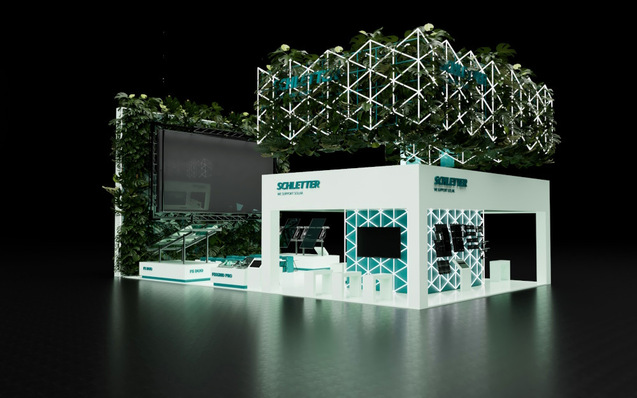All this is also having an impact on the increasing demands being placed on mounting systems. Thomas Bartsch, Head of Product Management at IBC Solar sheds light on current trends and explains why mounting systems need to be adapted to the new requirements.
Aesthetics are gaining importance
A clear trend, especially in the residential PV market, are the growing aesthetic demands of consumers. In the early years of photovoltaics, homeowners made the decision to install their own rooftop system because they were convinced of sustainable energy production. As a result, little attention was initially paid to the appearance of the PV system. Thanks to the drop in prices for photovoltaic systems in recent years, this has changed. Today, homeowners expect their PV system not only to provide renewable and sustainable energy, but also to look good.
The market is reacting to this demand: for example, the cells of the PV modules currently available on the market are becoming more and more homogeneous in their appearance. Especially black modules are very much in vogue in the residential market. However, a slim and elegant appearance cannot be achieved by the shape or color of the modules alone. All system components, including the mounting systems, form a unit and must fit together perfectly – not only for the sake of aesthetics, but also for reasons of safety and efficiency.
More efficient cells and larger modules
In terms of cell technology, the market has evolved from BSF (Back Surface Field) cells to PERC (Passivated Emitter and Rear Contact) cells. These already have a market share of about 90 percent today. However, with an efficiency of about 22 to 24 percent, they are reaching their technological limits and new cell types, such as TOPCon (Tunneling Oxide Passivation Contact), are appearing on the market.
In addition, the trend towards larger wafers and modules with higher power classes, as well as bifacial modules, is evident. Until 2010, the common wafer size was M0 (156 x 156 mm). This was followed by a standard size of M2 (156.75 x 156.75 mm) until 2018. From 2019, the standard size of M3 (158.75 x 158.75 mm) was mostly seen. In 2021, the wafer sizes M6 (166 x 166 mm) and M10 (182 x 182 mm) gained more and more market share, whereas the latter are mainly of interest for solar parks in Germany due to the specifications in the maximum allowed module size of 2m² for roof systems.
Larger wafers are being developed with the aim of producing solar modules with higher a output without having to use new cell technologies. However, this also results in new challenges for module assembly in terms of dimensions, deflection (deformation and breakage) and the loosening of clamps and brackets. This leads to significant limitations, especially in the roof area and when using aerodynamic systems.
Flexible mounting systems for different module sizes
Following the development towards ever-larger modules, flexible mounting systems can offer a number of benefits. Not only can installers use the same system they are familiar with for different module sizes. Flexibility also allows them to use different modules within the same system. That's because modules of different sizes are now being combined for a homogeneous look as well as maximum utilisation of roof space.
"In developing the latest generation of mounting systems for flat roofs, which can be used for modules with lengths from 1500 to 2100 mm and widths from 980 to 1150 mm, we have taken the latest trends into account," explains Thomas Bartsch, Head of Product Management at IBC SOLAR. "With the new IBC AeroFix G3, it is also possible to combine wide and narrow ground rails in the same system. This means that more stable roof surfaces or modules with less ballast can be covered with the less expensive, narrow rails, known as the Eco rail, because of the lower surface pressure. This not only ensures maximum flexibility, but also significantly reduces material costs and the overall cost of the system. At the same time, the roof is safely equipped."
Special requirements depending on roof shape
When choosing the installation method, the roof shape is the first decisive factor. Flat roofs are mainly used for commercial installations with larger systems. Calculating the load capacity is a particularly important step in this scenario. In addition to the weight of the components, potential wind or snow loads must also be considered. Furthermore, if the flat roof is thermally insulated, the load-bearing capacity of the insulation must also be carefully checked in advance. In order to better distribute the load of the solar installation, it is advisable to use a system with a wide support surface and wide rails to reduce point loads. To protect the roof cladding from damage and thus water penetration, a suitable building protection mat is required for flat roofs. Rail systems with an integrated structural protection mat are particularly suitable. Here, the mats are positioned on the rails in such a way that unhindered water drainage is guaranteed.
Especially in the residential sector, pitched roofs are the most common form. Here, the focus is more on aesthetics. In addition to trends in system color, a closed module arrangement is another factor for appealing aesthetics that is preferred by more and more homeowners. In the case of potential interfering factors on the roof, such as shading, or special features to be considered regarding roof orientation and pitch, microinverters are a good solution. These can be individually controlled so that in the event of partial shading, only the affected modules are reduced in power and not the entire string. In this way, the efficiency of the plant is not affected.
Focus on quality
In addition to the weight distribution, the possible mechanical load on the modules is also a safety-relevant factor. Because this can damage cells and thus reduce their performance. In systems with integrated tilting joints in the mounting bracket, such as the IBC AeroFix G3, modules can be mounted mechanically stress-free on the system to address this issue. The tilting capability and flexibility of latest-generation mounting systems offer further advantages. These include a higher number of different mounting and alignment options. Ideally, modules can also be mounted not only crosswise but also upright. With the help of additional support options for the module frames, the risk of breakage and the modules being pressed onto the roof surface is prevented.
Conclusion
Changing module sizes have a significant impact on the stability, safety and aesthetic requirements of today's PV systems. Each roof has its own specific requirements. Planning tools, such as the IBC SOLAR PV Manager, can help ensure professional and correct PV system planning. "Especially with regard to unique requirements, such as an unusual roof shape, special tiles or metal sheeting, it is even more important than usual that roof builders and solar installers work closely together.
This is the only way to ensure that a PV system does not void the roof manufacturer's warranty," Bartsch said. “In order to keep up with the new requirements, mounting solutions must meet high quality and efficiency standards. It is therefore advisable to make sure that the mounting system being used, has been tested under very strict conditions as in the PV-laboratory SUNLAB together with the modules and has a general building authority approval or ETA (comparable EU certification), which should then also be reflected in the warranty.” (hcn)
Did you miss that? Trina Solar and Tongwei push 210mm solar modules







